Awl Case Item Number: 50.67.36 from the Brooklyn Museum
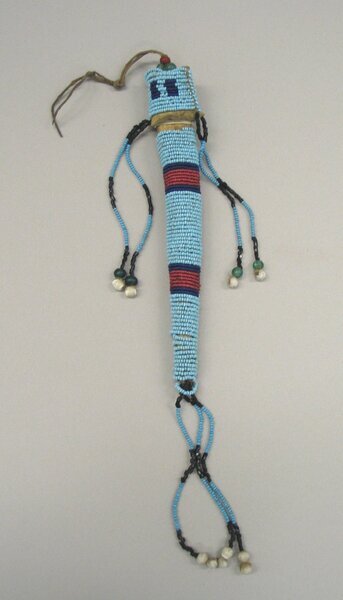
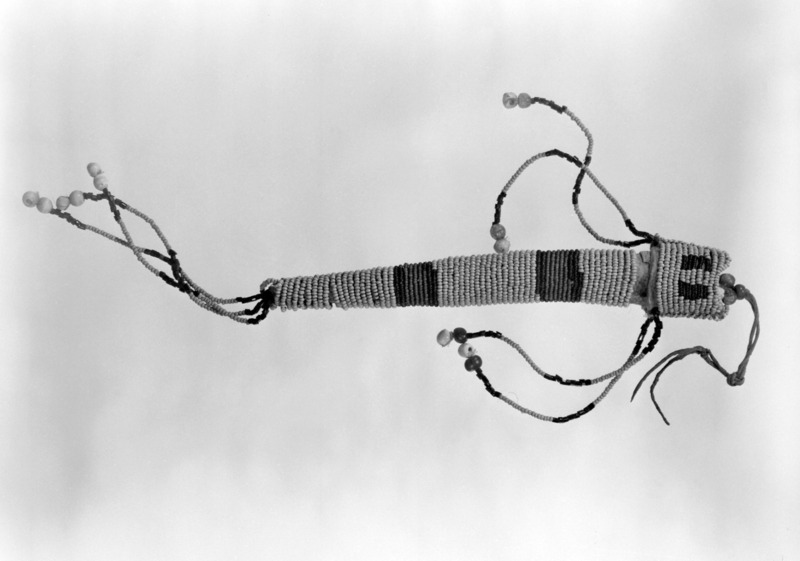
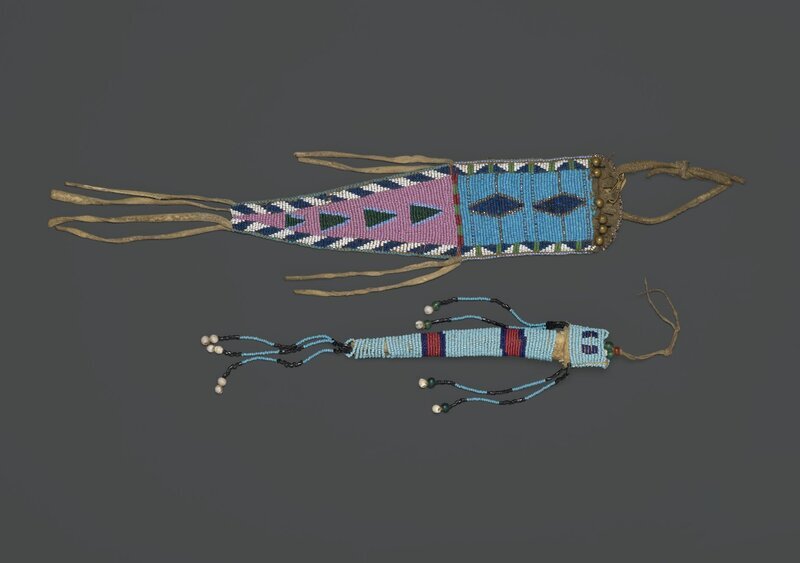
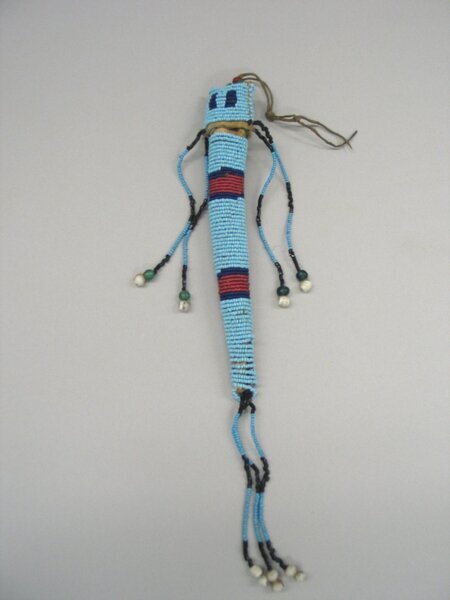
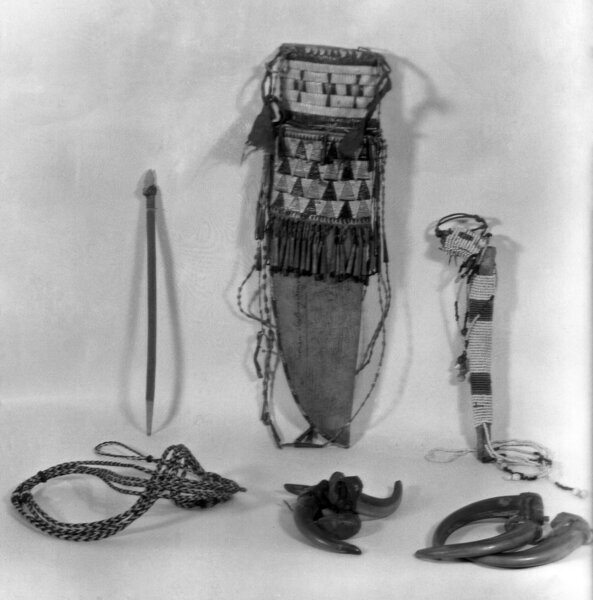
Description
(See object on bottom of photograph) Central & Northern Plains Sioux people made awl cases by winding or wrapping beads around a tubular shaft, made originally of rawhide and later sometimes of cardboard. Few cases in collections have bone or steel awls in them. Some have pointed wooden sticks, which may have been used as hair-part painters. Depending on size, and evidence of paint remains, some of these may be paint stick holders. These cases were hung on women's belts long after the use of the awl had diminished a vestigial representation of women’s traditional gear. and traditional role. The small, faceted dark red translucent tube beads were very popular in the 1830-1870 period. The use of the Cornaline d’Aleppo beads, red with a yellow interior, makes this piece especially fine. Great as household object. The white beads are unusual.
Credit Line
Henry L. Batterman Fund and the Frank Sherman Benson Fund
Label
THE JARVIS COLLECTION
The articles in this case and the adjacent clothing case [see 50.67.6] are some of the earliest and finest Eastern Plains pieces in existence. They were collected by Dr. Nathan Sturges Jarvis, a military surgeon stationed at Fort Snelling, Minnesota, between 1833 and 1836. Most items were made by the Eastern and Middle Dakota (Sioux) or by the peoples of the Red River region, including the Red River Métis, Anishinabe, Plains Cree, and Salteaux. Some of the objects were purchased by Jarvis, and others may have been given to him in exchange for his medical services.
By the early nineteenth century, the growing numbers of white settlers and military personnel—following decades of fur trading—had depleted much of the game on which the Dakota and Red River peoples depended. Indigenous ingenuity in combining trade materials such as cloth, metal, and glass beads with traditional hides, pipestone, and porcupine and bird quills is evident in these objects.
Item History
- Made between 1800 and 1825
What
Where
- Holding Institution
- Brooklyn Museum
When
- Creation Date
- between 1800 and 1825
Other
- Classification
- Carrier